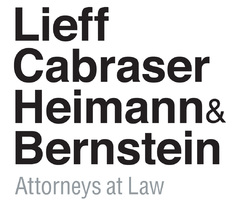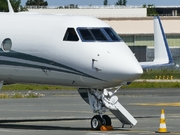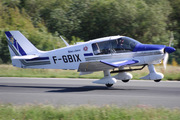Dépêches
Whistleblower Case Charging ATK Knowingly Sold Defective Flares To U.S. Department Of Defense Demonstrates Importance Of False Claims Act
Dépèche transmise le 25 avril 2012 par Business Wire

Whistleblower Case Charging ATK Knowingly Sold Defective Flares To U.S. Department Of Defense Demonstrates Importance Of False Claims Act
SAN FRANCISCO--(BUSINESS WIRE)--Robert J. Nelson of the national plaintiffs’ law firm Lieff Cabraser Heimann & Bernstein, LLP, and co-counsel for the whistleblower charging that ATK Launch Systems, a wholly owned subsidiary of Alliant Techsystems (NYSE:ATK), knowingly sold defective flares to the U.S. military, commented on the $37 million settlement of the False Claims Act lawsuit announced this week by the U.S. Department of Justice.
“This case highlights the importance of the False Claims Act”
“This case highlights the importance of the False Claims Act,” stated Nelson. “Not only does the statute protect taxpayers from bearing the ultimate financial responsibility for contractors that defraud the federal government, in the case of defense contractors, the False Claims Act helps to ensure that military contractors provide equipment that meets the military’s safety and performance standards.”
The specialized flares ATK manufactured were used in nighttime combat, covert missions, and search and rescue operations. A key design specification set by the Defense Department was that these highly flammable and dangerous items ignite only under certain conditions. The complaint alleged that the ATK flares at issue could ignite when dropped from a height of less than 10 feet – and, according to ATK’s own analysis, from as little as 11.6 inches – notwithstanding contractual specifications that they be capable of withstanding such a drop.
“The purpose of this specification was to ensure the safety of personnel handling the flares, which burn at an extremely high temperature and once ignited cannot be extinguished,” Nelson stated.
The lawsuit was filed by Kendall Dye, a former ATK employee under the qui tam, or whistleblower, provisions of the False Claims Act, which permit private individuals called “relators” to bring lawsuits on behalf of the United States and receive a portion of the proceeds of a settlement or judgment awarded against a defendant. Mr. Dye retained Lieff Cabraser and Phillips & Cohen LLP as his counsel. Fillmore Spencer LLC served as local counsel.
The False Claim Act Summarized
The False Claims Act prohibits persons from defrauding the federal government by knowingly presenting a false claim for payment or approval. The Act is designed to prevent losses to the federal government. Violations of the False Claims Act can result in a judgment in an amount equal to three times the amount of losses to the U.S. Treasury, plus civil fines.
Almost any type of fraud in which the government has paid money, or has been billed for money, based on a fraudulent claims, will likely fall under the False Claims Act. Many successful False Claims Act cases have involved Medicare and military contracting fraud, while other successful cases have dealt with federal funding for environmental, energy, farm and education programs, among others.
The "qui tam" provision of the False Claim Act allows a person or people to act as a whistleblower and sue the wrongdoer on behalf of the U.S. government. Some states also have qui tam statutes, and so claims involving losses to states may also be actionable.
A successful whistleblower is entitled to a percentage (ranging from 15 to 25 percent) of the total amount of monies the government recovers as a result of the lawsuit. Any person or entity that has evidence of a fraud occurring against the government may act as a whistleblower under the False Claims Act. For answers to frequently asked questions about the False Claims Act, please visit http://www.lieffcabraser.com/practices.php?PracticeID=36.
Described by The American Lawyer as “one of the nation’s premier plaintiffs’ firms,” Lieff Cabraser Heimann & Bernstein, LLP, is a sixty-plus attorney, AV-rated law firm founded in 1972 with offices in San Francisco, New York, and Nashville. Lieff Cabraser has litigated and resolved hundreds of class action lawsuits and thousands of individual cases, helping recover over $42 billion in verdicts and settlements for our clients, plus an additional $206 billion in the multi-state tobacco litigation.
Lieff Cabraser enjoys a national reputation for professional integrity and the successful prosecution of our clients’ claims. Every year since 2003, the editors of The National Law Journal have selected Lieff Cabraser for the “Plaintiffs’ Hot List,” the publication’s list of the nation’s top plaintiffs’ law firms. In November 2011, U.S. News and Best Lawyers selected Lieff Cabraser as their inaugural national "Law Firm of the Year" for 2011-2012 in the category of Mass Torts Litigation/Class Actions – Plaintiffs.
Lieff Cabraser actively represents whistleblowers in federal False Claims Act and state qui tam cases. These cases typically involve fraudulent activity in health care, military and defense contracting, general government contracts, student loans, and education funding.
Lieff Cabraser’s recent successes in False Claims Act cases include helping former University of Phoenix enrollment counselors receive a portion of a $78.5 million settlement, the largest settlement ever in a qui tam case involving the U.S. Department of Education. The complaint alleged that the University of Phoenix defrauded the Department of Education by obtaining federal student loan and Pell Grant monies from the federal government based on false statements of compliance with the Higher Education Act. For his outstanding work as Lead Counsel in this significant case, California Lawyer magazine gave Lieff Cabraser attorney Robert J. Nelson a California Lawyer of the Year (CLAY) Award.
- 24/04Ibis Styles London Heathrow : l'hôtel géré par un passionné d'aviation pour les passionnés d'aviation (photos + vidéos)
- 23/04 SkyUp renouvelle son partenariat avec Wizz Air
- 23/04 Play : résultats de mars 2024
- 23/04 Les garde-côtes japonais commande trois Airbus H225 supplémentaires
- 23/04 Vueling et Make-A-Wish France signent un partenariat
- 23/04 TUI annonce ses destinations au départ de Deauville pour l'été 2024.
- 23/04 Twin Jet renforce son programme de vols sur la ligne Toulouse/Rennes
- 23/04 Norse Atlantic Airways : résultats du mois de mars 2024
- 23/04 Volotea renforce son offre entre Lille et le Maroc
- 22/04 Finnair a dévoilé son programme de vol pour les saisons hiver 2024 et été 2025
- 22/04 Qatar Airways annonce le lancement de vols à destination de Kinshasa
- 22/04 Vietnam Airlines et CAE prolongent leur accord
- 22/04 Mermoz Academy de Tours commande des Tecnam P-Mentor
- 22/04 Transavia France reçoit son 2e Airbus A320neo
- 20/04 Friedrichshafen 2024 : Blackwing présente un nouveau modèle de son BW650RG
- 20/04 Friedrichshafen 2024 : JMB Aircraft présente son Phoenix
- 19/04 Friedrichshafen 2024 : le projet "Fly To The North"
- 19/04 Friedrichshafen 2024 : Aura Aero présente pour la première fois ses trois appareils
- 19/04 Friedrichshafen 2024 : Duc Hélices présente son hélice Tiger-3
- 19/04 Friedrichshafen 2024 : Splash-in Aviation expose son Pétrel X







